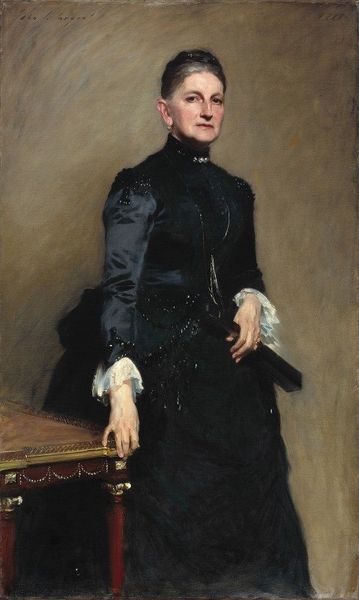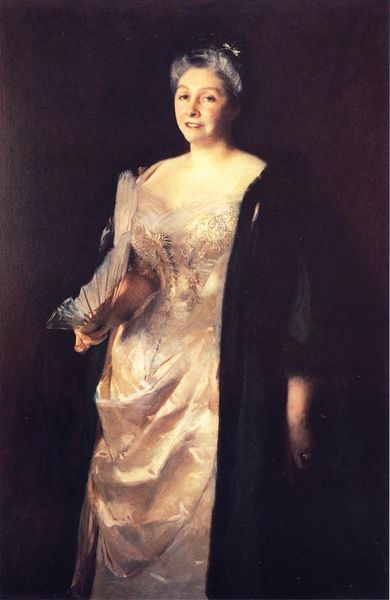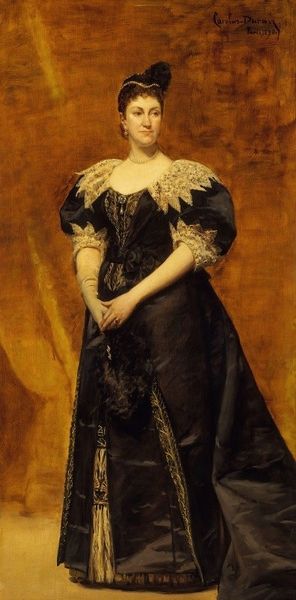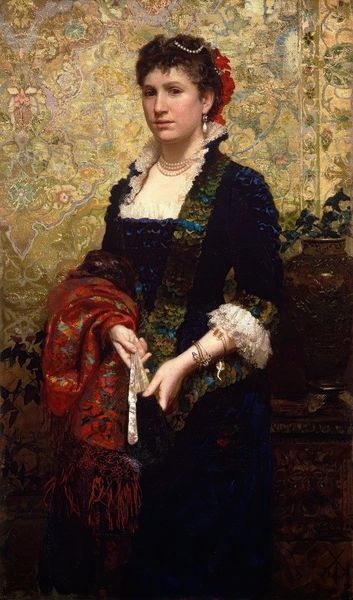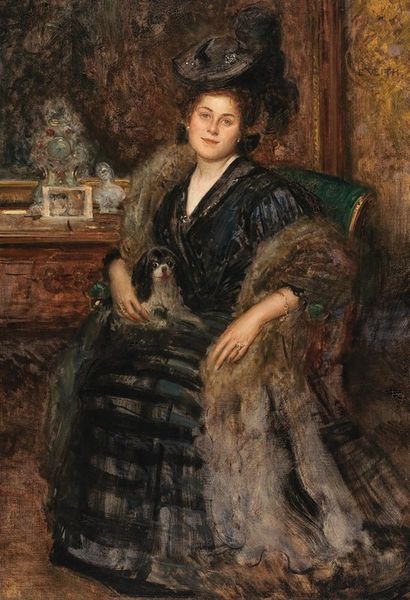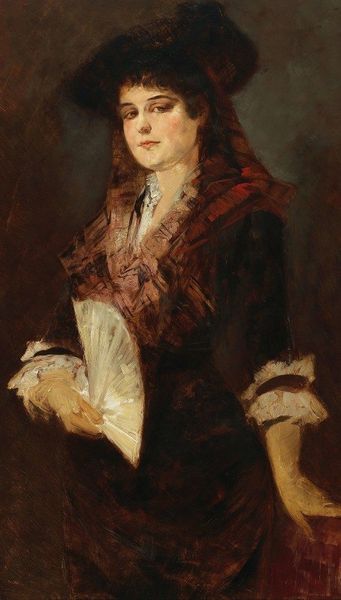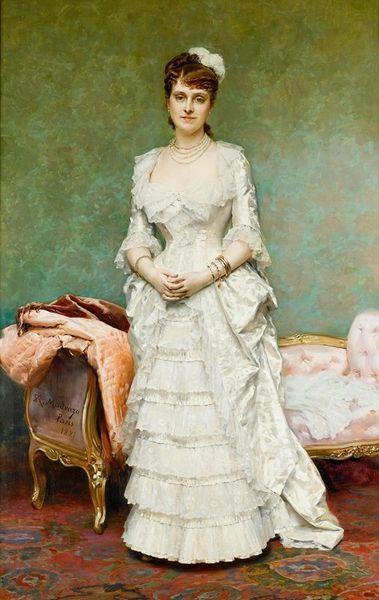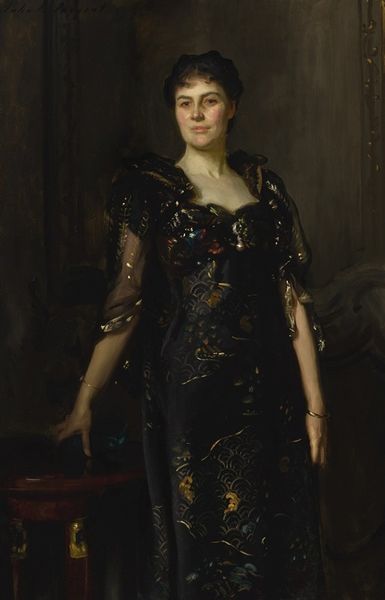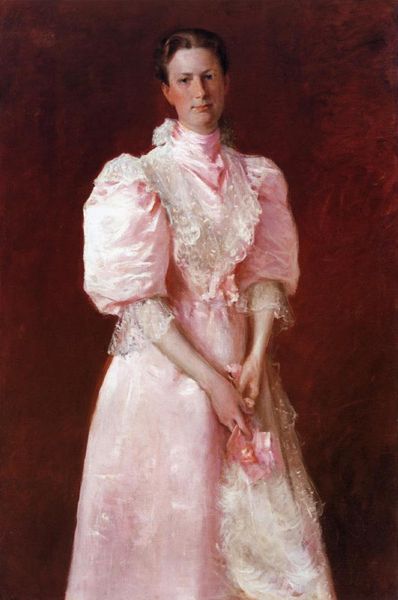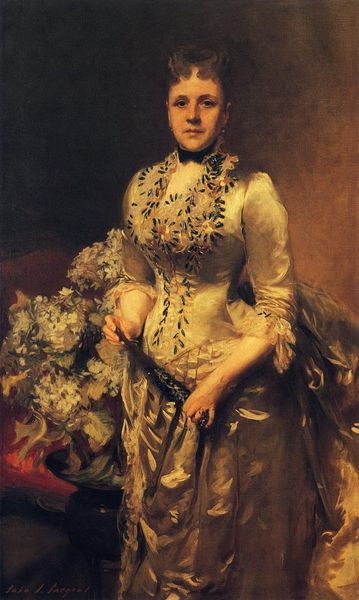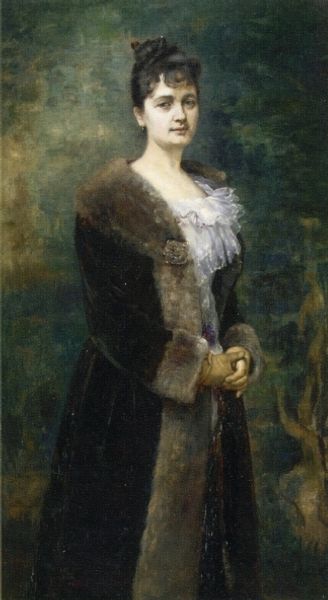
Copyright: Public Domain: Artvee
Curator: Constance Wynne-Roberts, painted in 1895 by John Singer Sargent. What stands out to you about this oil painting, especially considering its late 19th-century context? Editor: I’m really struck by the textures, especially the lace. The way it's rendered, almost dissolving into the background, makes me wonder about the role of portraiture in depicting wealth and status at the time. What’s your perspective? Curator: It’s important to consider the material conditions behind these depictions. Sargent's skill highlights the rise of industrial production, specifically how mass production influenced fashion and access to luxury goods like lace. Does the rendering suggest a shift in perception, from hand-crafted value to something more readily available? Editor: I see your point! The lace isn’t presented as a unique, painstakingly made object but more as an accent, a mass produced element in the sitter's wardrobe. It seems to indicate changing attitudes toward craft and consumption. Is the looseness in the brushstrokes an acknowledgement of this shift as well? Curator: Precisely! Sargent is showing us not just *what* she possesses, but the societal and material processes that have made such accoutrements readily available. This creates tension in how we see the portrait, between hand crafted art and items becoming readily available, wouldn't you agree? Editor: That makes total sense. I hadn't thought about the changing means of production influencing the very act of portraiture. This lens really reshapes how I see it! Curator: Indeed. By considering materiality and labor, we can decode deeper social narratives embedded within these painted surfaces. Editor: Absolutely. Thank you for broadening my understanding beyond just the surface appearance.
Comments
No comments
Be the first to comment and join the conversation on the ultimate creative platform.
